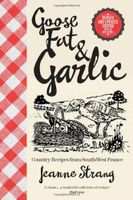Advertisement
Les Chataignes
Noix, châtaigne et fille, la robe couvre l’astuce
Published 1991

In most upland areas of the South-West these conditions generally recur from year to year. The chestnut plantations are most extensive where other staple crops will not grow. In the hills of the Cévennes, for example, there is little arable land and therefore little corn or rye. Before the days of modern communications chestnuts were more basic than bread, which was a comparative luxury. To Anglo-Saxons who associate chestnuts with marrons glacés and stuffing for the turkey, it is hard to understand that chestnuts were once the most important foodstuff in some country areas and that if the crop failed, total destitution followed. Before the arrival of coffee, peasant families started the day with a dish of boiled chestnuts and nothing more. The housewife’s first job in the morning was to prepare this crude but nourishing breakfast.

